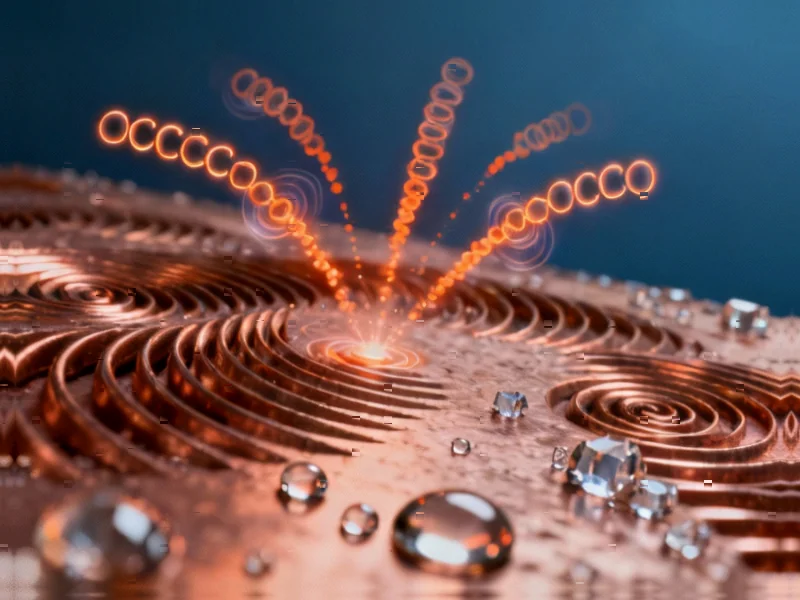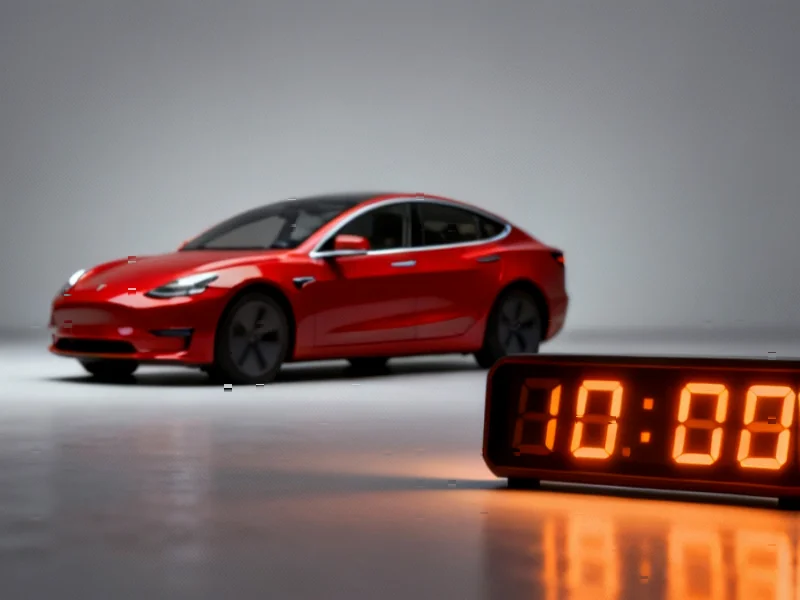Revolutionary Solar Fuel Production Breakthrough
Scientists have developed a groundbreaking photocatalytic system that efficiently converts carbon dioxide into ethanol using solar energy, according to research published in Nature Synthesis. The innovative approach reportedly achieves unprecedented selectivity of 93.7% toward ethanol production while operating without chemical additives, representing a significant advancement in renewable fuel technology.
Table of Contents
Chiral Structure Enables Unprecedented Selectivity
The breakthrough centers on chiral mesostructured copper-doped indium sulfide photocatalysts that create unique electronic conditions for CO2 conversion. Sources indicate that the chiral structure induces spin polarization within the material, which promotes the formation and stabilization of triplet OCCO intermediates critical to the reaction process. This spin manipulation, analysts suggest, represents a novel approach to controlling photocatalytic reactions at the quantum level.
Mechanism Behind the Efficiency
The report states that the chiral-induced spin polarization works in concert with strategically placed copper-indium dual sites on the catalyst surface. These reactive sites efficiently convert the stabilized triplet OCCO intermediates into chemisorbed *OCCO and *OCCOH intermediates. This synergistic mechanism reportedly facilitates an efficient carbon-carbon coupling process that preferentially leads to ethanol production while minimizing competing reactions that typically generate methane, carbon monoxide, or other less valuable carbon products.
Overcoming Historical Limitations
Photocatalytic carbon dioxide reduction has long been considered a promising approach for converting greenhouse gases into valuable fuels and chemicals using solar energy. However, the report indicates that previous systems have struggled with low yields and poor selectivity toward specific multi-carbon products. The new chiral photocatalyst system appears to overcome these limitations by controlling both the electronic spin states of reaction intermediates and providing optimized surface sites for specific chemical transformations.
Broader Implications for Renewable Energy
The findings demonstrate that combining chirality-induced spin polarization with tailored surface reactive sites can achieve high selectivity and productivity in photocatalytic CO2 reduction, according to the research team. This approach reportedly highlights the importance of enhancing overall carbon intermediate management for multi-carbon product formation. The technology could potentially contribute to carbon-neutral fuel production while expanding fundamental understanding of photocatalytic mechanisms.
Future Applications and Development
While the research demonstrates laboratory-scale success using simulated solar radiation, analysts suggest the principles could be applied to develop practical solar fuel production systems. The reported efficiency and selectivity metrics represent significant progress toward economically viable artificial photosynthesis technologies that could potentially convert industrial CO2 emissions directly into valuable transportation fuels using abundant solar energy.
Related Articles You May Find Interesting
- European Aerospace Giants Forge Alliance to Compete With SpaceX Dominance
- Thermal Energy Storage Breakthrough Hits 100 MWh Milestone, Paving Way for Indus
- New GrapheneOS Smartphone in Development: Security-Focused Alternative to Google
- Canada Announces New Financial Crimes Agency and National Anti-Fraud Strategy to
- Halliburton’s Strategic Power Play: Data Center Energy Investment Signals Major
References
- http://en.wikipedia.org/wiki/Photocatalysis
- http://en.wikipedia.org/wiki/Carbon_monoxide
- http://en.wikipedia.org/wiki/Triplet_state
- http://en.wikipedia.org/wiki/Solar_energy
- http://en.wikipedia.org/wiki/Ethanol
This article aggregates information from publicly available sources. All trademarks and copyrights belong to their respective owners.
Note: Featured image is for illustrative purposes only and does not represent any specific product, service, or entity mentioned in this article.



